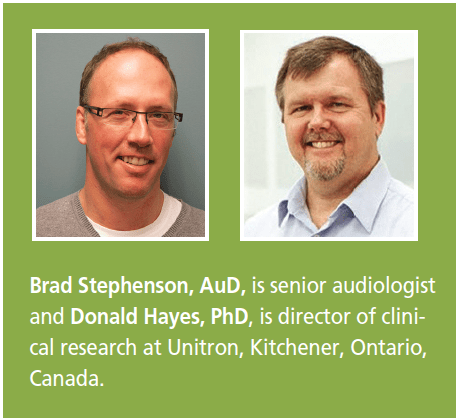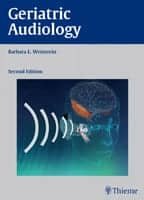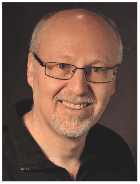Tech Topics: Hearing Aids | February 2014 HR
By Brad Stephenson, AuD, and Donald Hayes, PhD

In fact, a recent survey of more than 2,000 individuals under the age of 65 showed that 9 in 10 expect their retirement plans to include three phases spread over a 30-year period (Table 1).1 In general, the first two phases either reflect no change in lifestyle upon retirement, and/or actually reflect an increase in lifestyle activity. Even in the final phase of retirement, when health issues may require a less active lifestyle, many seniors facing a loss of independence make the shift to high density dwellings where speech in noise demands can be equally significant.
What Impact Do Lifestyle Demands Have on Hearing Aid Wearer Needs?
It is well recognized in the hearing care industry that lifestyle choices play a significant role in an individual’s hearing aid purchase decision. Hearing aid manufacturers continually invest significant resources to understand and remain current on the ever-evolving needs of hearing aid wearers, and advanced technologies to ensure continued satisfaction despite changing lifestyle demands.
With this in mind, we would like to share our research, which highlights the shifts in lifestyle of retirees that will ultimately increase the acoustic demands of a hearing aid wearer. To do this, we can start by looking at each of the three phases of retirement in more detail:
1) Hearing in the “Transition” phase. Mandatory retirement has been a widespread practice across the world since 1960, with a typical default retirement age of 65 years.2 For the hearing aid industry, this meant that the average first-time wearer, at 69 years, was already 4 years into their retirement. Manufacturers were aware of, or quickly learned, the importance of managing the noises that affected a wearer’s experience, which were largely outside of a work environment.
However, the practice of mandatory retirement has now been recognized as a form of age discrimination. Thus, legislation across the world is being updated to protect individual rights, which means that the average hearing aid wearer of today in the transition phase of retirement is more likely to be employed than their predecessors, may choose an entrepreneurial second career, or step up their volunteer activities.
Manufacturers are well aware that work environments can be incredibly complex from an acoustic perspective, as there are a multitude of noises in a variety of different listening situations. Workplace noise has been shown to have a significant impact on job satisfaction for normal hearing individuals,3 so manufacturers are proactively developing features to manage the impacts of workplace noises on a hearing aid wearer’s experience.
2) Hearing in the “My time” phase. In the “My time” phase of retirement, people have more time for travel and other leisure activities. While previous generations may have retired to quiet gated communities in sunny locations, today’s Baby Boomer retirees want to travel and gain educational and enriching experiences.
Many plan to be active both physically and intellectually.4 They are also active users of the Internet, which increases their awareness of the world around them and activities of interest within the community.
It is therefore believed that today’s hearing aid wearers will spend more time outside their homes and more time in listening situations (such as airports) with a diversity of noise sources. The noise levels encountered while attending a cooking class in Italy are certainly more complex than those encountered during a buffet dinner at the clubhouse in Florida.
These anticipated changes in listening environments are of particular importance to hearing aid feature development because the types and variety of noises are dependent on the amount of social engagement during leisure and travel-based activities.
3) Hearing in the “Last waltz” phase. General trends as to where hearing aid wearers choose to live are an important consideration for manufacturers, as the noise sources present in single family homes in the suburbs can be much different than those generated in a condominium located in a busy metropolitan center.
A recent survey5 shows that retirees are more apt to live in more accessible locations in relatively high density dwellings, such as condominiums and retirement residences. These high density locations are inherently more noisy for several reasons; there is less distance separating people and their noisy lifestyle, and homes are typically physically smaller, causing hearing aid wearers to be closer to distracting household sounds.
So we now can see that today’s hearing aid wearers of retirement age have different needs than those of previous generations due to a changing lifestyle. They also have different needs in each phase of their retirement as they progress from transitioning into semi-retirement, through the leisure phase and into the last waltz. And market research shows that hearing aid wearers’ satisfaction is dependent on the management of noises through their hearing aids.6
Manufacturers have ensured high levels of continued patient satisfaction through technology advancement, incorporating adaptive technologies such as directional microphones and noise reduction. To sustain these high satisfaction levels, they must continue to evolve adaptive technologies to address changes in hearing aid wearers’ needs and lifestyles—addressing the noise demands that arise during every phase of the retirement years.
Evolving Technology to Meet Shifting Lifestyle Demands
Unitron takes a hierarchical approach to its product development, considering a patient’s comfort at the most fundamental level, followed by natural sound quality, and finally performance improvements in areas such as speech intelligibility in challenging listening environments.
As a direct outcome of this philosophy, Unitron created a metafeature called SmartFocus™ that simultaneously controls multiple adaptive parameters to achieve either better clarity or increased comfort. Implementing this feature within the automatic program allowed SmartFocus to provide benefit in any environment. In fact, this metafeature was shown to provide 16% improved speech-in-noise (SIN) performance over benchmark premium hearing aids with directional microphones only (see white paper by Donald Hayes available on Unitron website7).
However, the wide range of needs exhibited by today’s retirement age hearing aid wearers have necessitated a re-evaluation of the underlying adaptive features in order to address the more complex noise sources that arise in each phase of retirement. The focus of these changes was to maintain the same superior speech intelligibility performance, while ensuring these wearers experienced less distraction from everyday noise and ease of listening when in a noisy environment. This was achieved with the creation of the next generation of this feature, SmartFocus 2, which includes two key improvements: noise reduction LD and speech enhancement+.
Noise reduction LD. It was recognized that the noises inherent within today’s patient lifestyle could not be addressed with a “one size fits all” approach. That is, today’s satisfaction levels are dependent on our ability to effectively reduce noises that are considered distracting, and a linear noise reduction approach would not be sufficient. Our noise reduction feature now includes a level-dependency algorithm, which allows our hearing aids to be more aggressive with distracting noises present in an active lifestyle—noises that may otherwise be perceived negatively or require action such as lowering the volume to maintain comfort.
Allowances also were made for either soft ambient environments or loud environments. For example, soft noises such as a refrigerator’s motor would not necessarily impact one’s ability to hear speech, but do require cognitive effort to both recognize the sound and choose to ignore it. By contrast, patients trying to listen to a cashier in a noisy environment, such as a grocery store, need a way to focus on the cashier’s voice while ignoring abundant background noise.
These adjustments broaden the impact of the noise reduction feature, allowing SmartFocus 2 to be more effective with the noises that would ultimately impact the wearer’s satisfaction level.
Speech enhancement+. The diversity of environments hearing aid wearers face today, combined with Unitron’s ongoing focus and core competency in the area of speech intelligibility, made it necessary to take a different approach with speech enhancement in SmartFocus 2. While the previous version offered the same amount of level-dependent speech enhancement to each frequency, speech enhancement+ was purposely defined to apply different amounts of speech enhancement at different frequencies.
Mid-frequency speech sounds receive more enhancement as speakers shift their vocal energy upward to the mid-frequencies when raising their voices to be heard above a high level noise floor. Less enhancement is applied to low frequencies because this frequency range is predominantly made up of distracting noise. Finally, less enhancement is applied to high frequencies in order to deliver naturally sounding speech. The net result is ease of listening in the most complex speech in noise situations.
Conclusion
Satisfaction levels within the hearing aid industry have reached unprecedented levels, an achievement that is the culmination of technological advancements, improved clinical care, and a better understanding of the social and environmental changes impacting hearing aid wearers. However, the lifestyles of hearing aid wearers continue to change and evolve. People of retirement age today are active in every phase of retirement, from transition phase to the last waltz, with frequent exposure to a variety of noise.
Vigilance is required across the hearing aid industry to ensure both clinical care and technology evolve to address these shifting needs. SmartFocus 2 was purposely designed to provide today’s hearing aid wearer with a superior listening experience across all facets of their lifestyle.
References
1. UBS Investor Watch 4Q 2013. 80 is the new 60. Available at: http://www.ubs.com/us/en/wealth/research/Investor-Watch-Research-Archives/_jcr_content/par/textimage_4.1878809578.file
2. Wunsch C, Raman JV. Mandatory retirement in the United Kingdom, Canada and the United States of America. London: The Age Employment Network; 2010. Available at: http://taen.org.uk/uploads/resources/Combined_dissertation_final_formatted.pdf
3. Sundstrom E, Town JP, Rice RW, Osborn DP. Office noise, satisfaction, and performance. Environment and Behavior. 1994;26(2):195-222.
4. eTN Global Travel Industry News website. March 2009. Aging boomers poised to redefine travel industry. Available at: www.eturbonews.com/8320/aging-boomers-poised-redefine-travel-industry
5. Krizek KJ, Waddell P. Analysis of lifestyle choices: neighborhood type, travel patterns, and activity participation. Transportation Research Record: Journal of the Transportation Research Board. 2002;1807(1):119-128.
6. Kochkin S. MarkeTrak VIII: Consumer satisfaction with hearing aids is slowly increasing. Hearing Jour. 2010;63(1):19-20.
7. Hayes D. SmartFocus independent study: user control over adaptive features delivers real client benefit (white paper). Available at: http://unitron.com/unitron/au/en/professional/products/products-p/purpose-driven_technologies-p/smartfocus-userpreference.html
CORRESPONDENCE can be addressed to Dr Stephenson at: [email protected].
Original citation for this article: Stephenson, B. D. Hayes. Satisfying the demanding lifestyles of today’s hearing aid wearers. Hearing Review. 2014;21(2):30-33.



